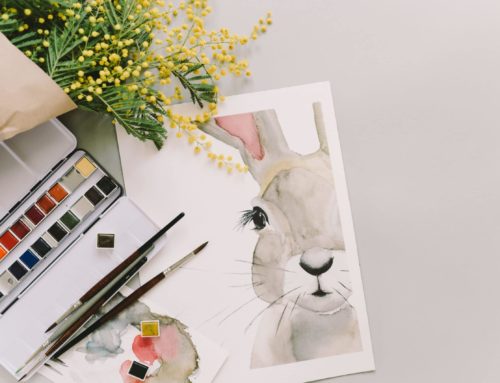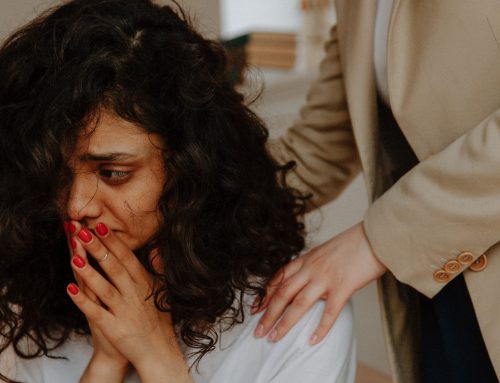Art Therapy and Mindfulness

Many of us have heard of mindfulness. In many western countries and cultures, mindfulness is associated with yoga, meditation and other activities focusing on deep and slow breathing to calm the mind. Mindfulness is an ancient practice of being guided by the noble Eightfold Path and other teachings from the Buddha. Mindfulness’ attitudinal foundations of non-judgment, patience, beginner’s mind, trust, non-striving, acceptance, and letting go resonate with many non-Buddhist people aside from its religious roots. Thus, mindfulness spread into the western world and interested the field of psychology in the late 1970s.
Interests in incorporating secular mindfulness practices into treatment plans grew after several researches published about the potential benefits of mindfulness (Kabat-Zinn, 2013). So, what is secular mindfulness?
Secular mindfulness is when the practice of mindfulness excludes its religious context. This way to practice focuses on the core values of mindfulness:
- self-awareness
- being present in the moment
- non-judgment towards self and other (Kabat-Zinn, 2013)
If one takes a closer look, one may notice many cultural and/or religious practices around the world share these common values. Therefore, mindfulness has the potential to offer people from all walks of life a relatable approach towards self-acceptance.
Academically there continues to be a plethora of research conducted to support the use of mindfulness as an effective way for stress and anxiety management. Its popularity is clearly notable as mindfulness programs have entered many workplaces and educational institutions in forms of daily or weekly group practices, workshops, and retreats. Mindfulness-Based Stress Reduction (MBSR) and Mindfulness-Based Cognitive Therapy (MBCT) are amongst these most well-known prescriptible programs. These programs are very structured and require mandatory consistent participation of weekly classes and a one-day silent retreat.
While mindfulness is useful to many, not everyone shares the same enthusiasm towards the practice. Mindfulness practice takes dedication, time and self-discipline; sometimes it is hard to “keep at it” when life gets busy. Peer support, such as practicing with a family member or friend, is one way that may help starting and maintaining a mindfulness practice. However, there are times when the structured practices offered in the conventional format don’t work.
This is where art therapy may be helpful! In a previous blog entry “Talk Therapy or Art Therapy” we shared how art therapy can be a sensory, “bottom up” approach; art therapy can be greatly complemented by mindfulness techniques. “Expressive art making with formal or informal mindfulness allows increased awareness of any emotions that arise, which are observed, acknowledged, and expressed” (Hass-Cohen & Clyde Findlay, 2015, p.347). Once safety has been established and depending on the needs of the client, the art therapist may choose specific mindfulness inspired art therapy directives to explore deeper topics. For example, the art therapist may facilitate a shortened body scan and invite the client to create a piece of art in response to the experience. The artwork may then become a point of reference for the client to gain greater insights of underlying issues buried in the subconscious mind that may have been more difficult to access through traditional “talk therapy”.
To dwell in the here and now does not mean you never think about the past or responsibly plan for the future. The idea is simply not to allow yourself to get lost in regrets about the past or worries about the future. If you are firmly grounded in the present moment, the past can be an object of inquiry, the object of your mindfulness and concentration. You can attain many insights by looking into the past. But you are still grounded in the present moment. (Hanh, 2007, p.128)
By promoting focus on the present moment, paying attention to bodily sensations and placing an emphasis on intentional breath work, the art therapist can help the client establish a firm grounding to explore difficult topics with a much lower risk of re-traumatization.
Although many who practice mindfulness may say it is life changing, it is important to remember that mindfulness is not a way to “fix” a problem. While mindfulness is beneficial to many, growth and healing solely through a mindfulness practice cannot be accomplished. Mindfulness prepares the heart’s readiness for compassion. Together, mindfulness and compassion promote growth and acceptance (Brach, 2012). Some shortfalls of mindfulness may include plateauing in the practice, a lack of emphasis on the compassion component which may not be clearly outlined in some secular mindfulness practices, and a lack of support, motivation and/or guidance on what to do next. A network of support may include family, friends, peers, health care providers, and mental health care professionals. Contact our art therapy team and see how we can support your journey towards growth and healing.
References:
Brach, T. (2012, May). Unfolding the wings of acceptance. Tara Brach. https://www.tarabrach.com/unfolding-the-wings-of-acceptance-2/
Hanh, T.N. (2007). The art of power. San Francisco, CA: HarperOne.
Hass-Cohen, N. & Clyde Findlay, J. (2015). Transformative integrating: Mindful awareness. Art therapy & the neuroscience of relationships, creativity and resiliency (pp. 326-348). New York, NY: W.W. Norton.
Kabat-Zinn, J. (1990/2013). Full catastrophe living: Using the wisdom of your body and mind to face stress, pain, and illness. New York, NY: Bantam.






